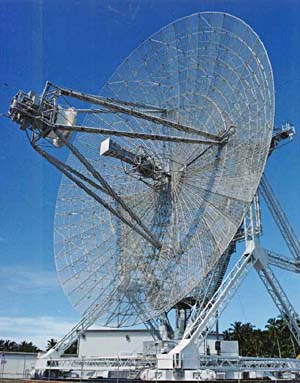Science Inventions
RADAR
Science Inventions
Introduction
Heinrich Hertz began
experimenting with radio waves in the late 19th Century. His
experiments showed that radio waves would bounce off of metallic surfaces. An
earlier scientists had suggested that radio waves might reflect off objects
when he was studying electromagnetism.

RADAR Antenna
Device for detecting ships in the fog
It took until early in the
20th century for mechanisms using this knowledge to become widely
available. A German inventor name Christian Hulsmey created a device for
captains of ships sailing in fog to detect another ship so they could avoid
collisions in the fog when visibility was very poor.
US Signal Corps
The Navy developed a new
navigation and detection system in 1939. The US Signal Corps coined the term
RADAR while working on the system. The term is an acronym for RAdio Detection
and Ranging. The term continued to use the term RADAR for later developments in
RADAR that the military wanted to focus on finding unknown targets.
Early models of RADAR
The earlier
models of RADAR were developed to navigate to or away from unknown ships. Both
of the RADAR systems were basically the same that were developed by the Signal
Corp in 1939.
Heinrich Hertz experiments
The RADAR systems were
based on Heinrich Hertz experiments that found when an electric current
swinging back and forth rapidly generated electromagnetic waves that we call
radio waves today. The wire used by Hertz is the antenna in the RADAR
generation of radio waves. He used an electrical spark to generate the waves.
Hertz frequencies
Hertz experiments led to the measuring of frequencies in Hertz (Hz), and the
oscillations per second which are radio frequencies in megahertz.
More Science Inventions, Information & News
Science Articles for Kids - Includes information about the Sun’s magnetic poles changing, tourist in space, a two-toned lobster, Kepler telescope discoveries and our science newsletter for kids.
Science Current Events – Sun’s Magnetic Poles The Sun’s magnetic poles switch polarity once every eleven years. This is due to occur in the next few months.
Current Events in Earth Science – Space Tourists Virgin Galactic’s Space Ship Two (SS2) flew over the Mojave Desert in California on September 5, 2013. Virgin Galactic’s goal is to fly tourists into space in 2014.
Kids Current Events – Two-toned Lobster A rare two-toned lobster was caught off the coast of Maine. It is estimated that only 1 in 50 million lobsters will have this coloration.
Current Events in Science – Kepler’s Space Telescope NASA’s top planet hunting telescope was launched on March 6, 2009. The telescope has found thousands of planets outside our Solar System since it was launched.
Science Trivia page includes information about the discovery of Pluto, cave formation, Mammoth Cave, bones of the human skeleton, Genghis Khan, industrial revolution, spinning jenny and much more.
Science Inventions The first navigation system was developed for captains sailing in foggy conditions to keep ships from colliding in the fog. The US Military developed an improved system in 1939.
Kids Science Newsletter Our FREE science newsletter is published each month during the school year. The newsletter includes science news, trivia, and a fun activity. Check out a sample of our newsletter on this page.
KIDS FUN Science Bookstore
Check out Myrna Martin's award winning textbooks, e-books, videos and rock sets. The Kids Fun Science Bookstore covers a wide range of earth science topics. Click here to browse.










